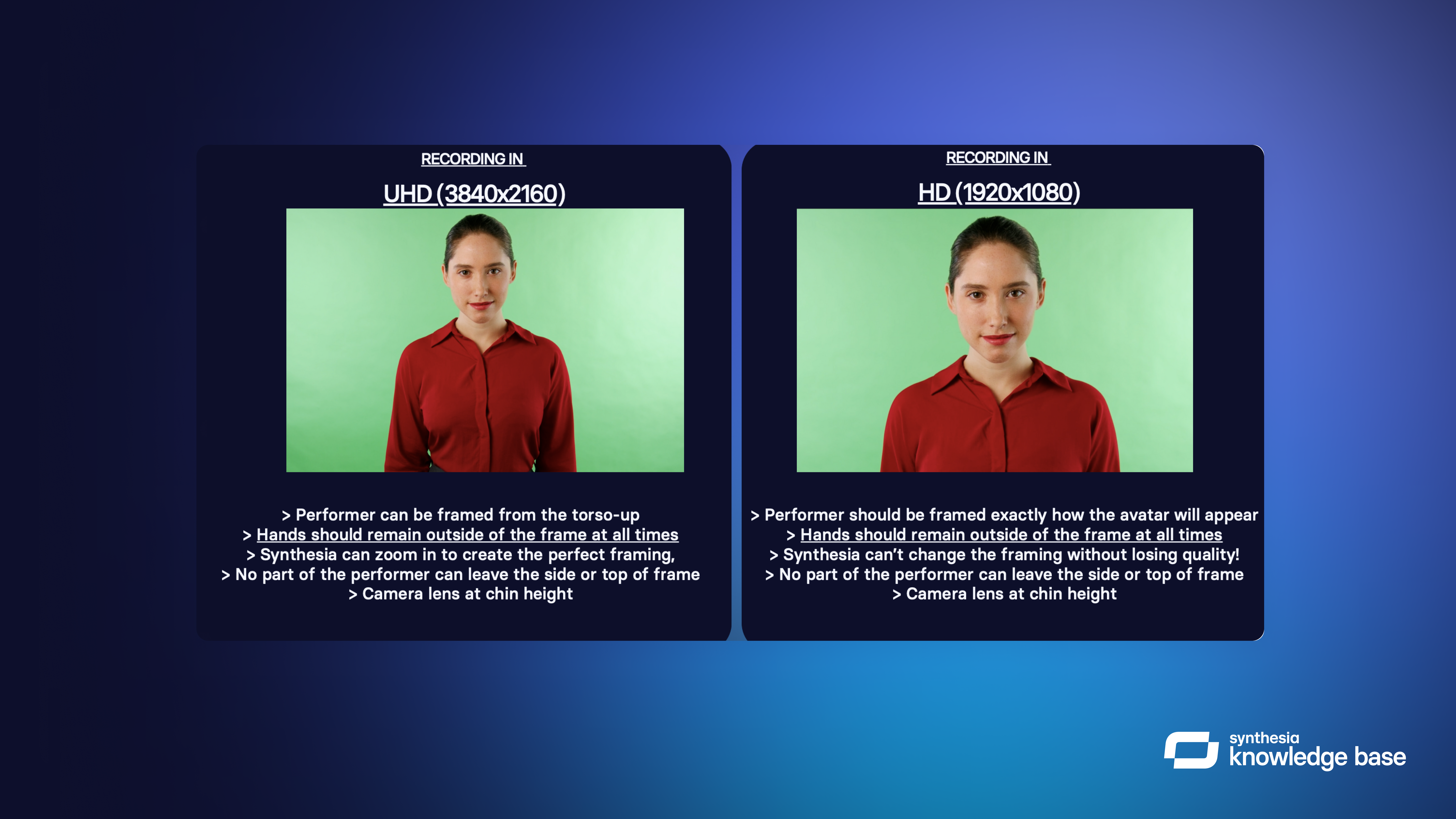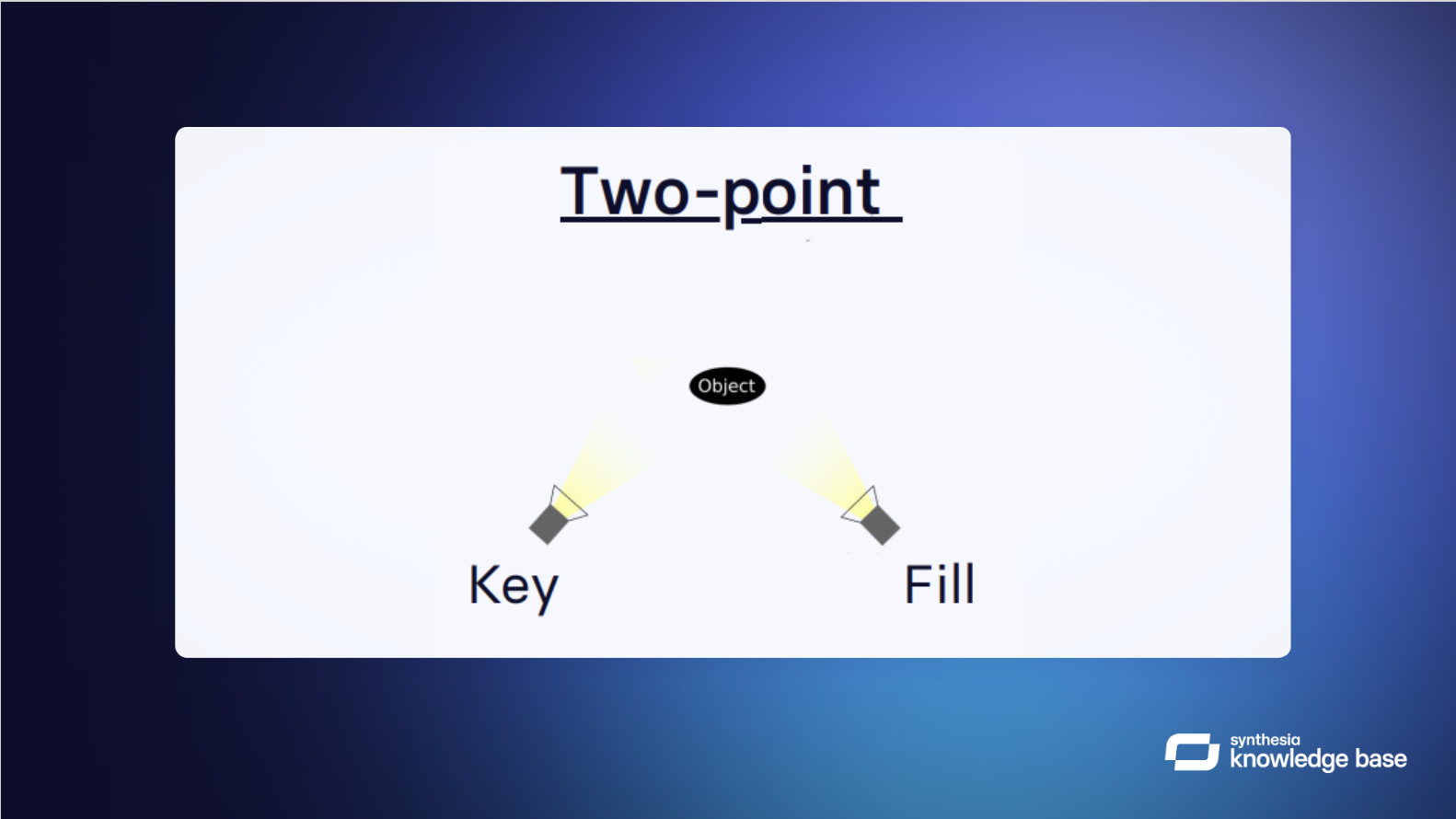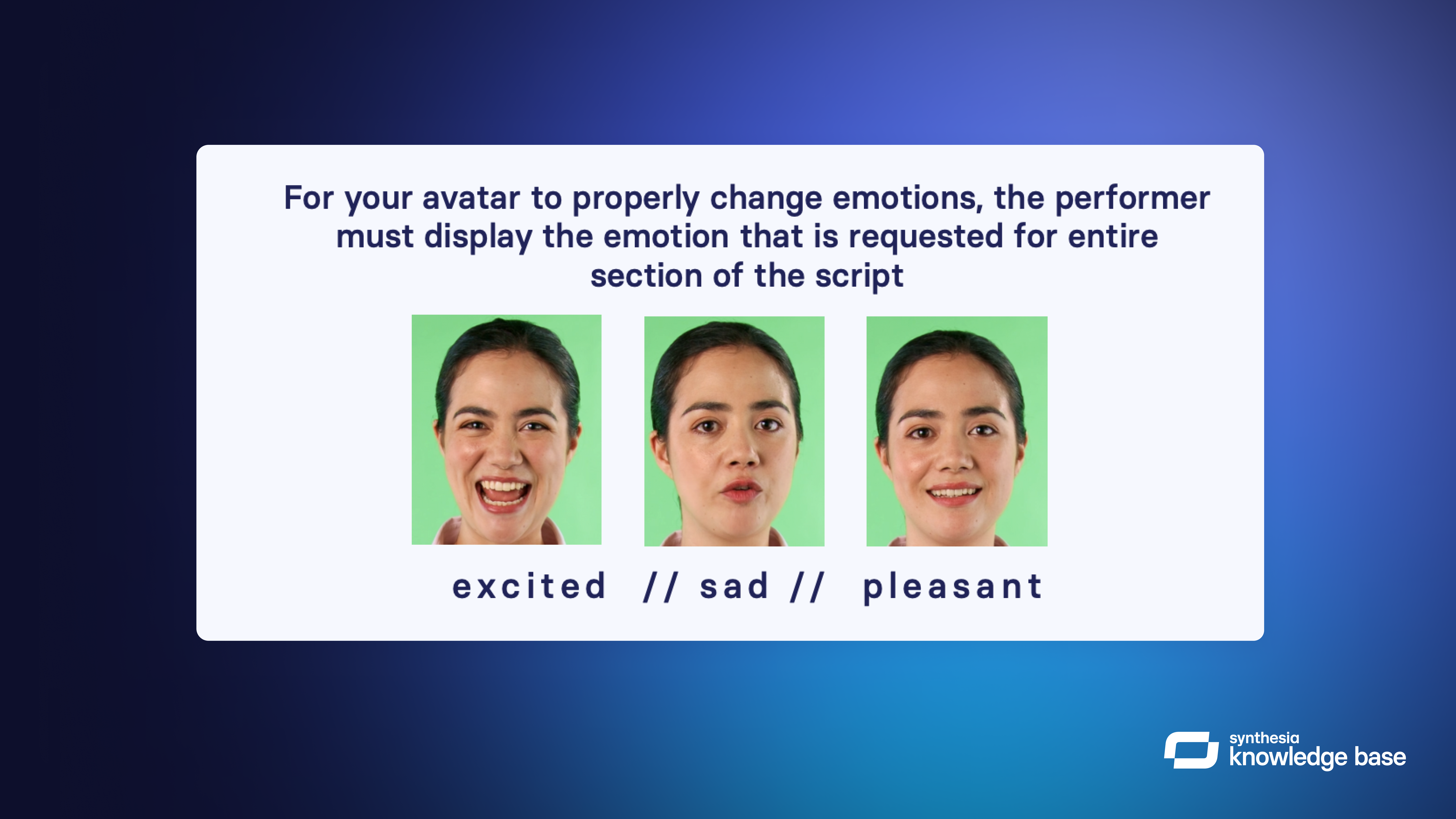STUDIO DIGITAL SPOKESPERSON
🎥 Oculu AI Digital Spokesperson
Your digital spokesperson is created from your green-screen recording using AI technology. It allows your company representative to deliver messages or updates without additional filming.
To create a new video, upload your script, generate the file, and it will appear in your Oculu account for download, hosting, or sharing.
Here is whats include in your studio digital spokesperson package:
- The creation of a life-like digital spokesperson for future use.
- 10 completed videos
- 1 year subscription to an AI digital software creator
- 1 year subscription to the Oculu Video Platform
Creating a Studio Express-1 AI digital spokesperson
This guide explains the complete process for creating your Studio Express-1 AI digital spokesperson, including all technical requirements, setup details, and recommendations for achieving the best possible results.
Follow the steps below to prepare, film, and submit your footage so your digital spokesperson can be created accurately and efficiently.

Requirements
It is advised to practice hand movements, resting position, and reading the script at least once before the first take.
Please note that the digital spokesperson’s quality depends on depends on receiving footage that matches these guidelines. If the standard is not met then a reshoot might be needed.
The requirements for creating a Studio Express-1 digital spokesperson are as follow. It is recommend that you read through each section to ensure you create optimal footage for your digital spokesperson.
You can download a pdf version of the requirements here.
In order to create a Studio Express-1 AI digital spokesperson, you must be at least 18 years of age.
1. Video Background
When creating Studio Express-1 digital spokesperson footage the background of the video is important. We need to be able cut out the actor from the video.
Here’s what works well:
A GREEN SCREEN BACKGROUND and ensure the screen is well lit with no shadows. This method is required to create the highest quality digital spokesperson.
Make sure that the background does not clash with the clothes or skin tone.
Avoid wearing any green with a green background. Your footage may be rejected if this is not followed. Please use a white or blue background if you are wearing green clothing.
Do not remove the background yourself. We will do this before digital spokesperson creation.
Q: What do I do if I can’t shoot in a studio?
A: We can use footage shot in an office but be extra careful to make sure the actor stands out from the background and you have good lighting and clear audio.
We recommend that you have access to reshoot footage based on our feedback, if required.
2. Camera
A good quality camera is critical when creating footage. Make sure to shoot with a dedicated video camera.
Here’s what we need for the camera setup:
UHD resolution at 3840×2160
29.97 fps or 30 fps (frame rate per second)
Position the camera at the same height as the actor’s eyes
Make sure the focus on the face is sharp
Do NOT use any type of streaming software, webcams or applications that capture your recording over an internet connection. Standard video production technique that consists of a camera and external microphone is required.
Q: What if I can’t shoot at UHD?
A: If you can only shoot HD video footage, that’s fine, but make sure to shoot the exact framing you would like to see for the digital spokesperson.
What if I am shooting video in Europe?
A: If you shoot video in Europe with conventional room lighting such as office fluorescents, then you will need to shoot at 25fps to avoid video flicker. This is OK, however if you have studio lighting then please record at NTSC 29.97fps in Europe.
3. Framing
Set the framing for the upper body of the actor.
We recommend filming your actor in UHD 3840×2160 as we are able to reposition the framing slightly, if required.
If you are only able to film in HD 1920×1080, then we ask that you frame the digital spokesperson in the exact framing that you want the digital spokesperson to be in, as we are NOT able to adjust framing during the digital spokesperson creation process.
Examples of framing

4. Lighting
Good lighting sets the tone and feel for your digital spokesperson. Maintain a consistent lighting setup throughout the filming process. Avoid any unnecessary changes in light intensity or direction. Lighting choices can significantly impact the overall aesthetic and contrast of your digital spokesperson. We do nor offer post-production adjustments, it’s crucial to ensure proper lighting during recording.
Here’s what we recommend:
Use a three-point lighting setup however a two-point lighting setup will also work
Ensure fixed even illumination on the actor
Avoid shadows, particularly across the face
Three-point lighting setup:

Use a main Key light at the front to illuminate the actor, this is positioned slightly to one side to add depth to the face.
Use a Fill light on the other side of the camera to avoid shadows and a Backlight if possible, to highlight the actor and separate them from the background.
Two-point lighting setup:

Use a softer Key light to create contrast from left to right of the image.
This can limit the depth of the subject being filmed if the right type of equipment and intensity is not being used.
Q: What if a two-point or three-point setup is not possible?
A: No problem, just make sure the actor is well lit from the front and clearly stands out from the background. Make sure to check there are no strong shadows across the face and body. Keep the light flat and even.
5. Audio
Voice clones also now come with Custom Studio digital spokespersons. Please ensure that the audio is clean and there are no sounds from off-camera people or objects.
We use audio to train our AI algorithms to match the lip movement for the actor. We can use the on camera audio but make sure it is clear.
If the following is not followed, your footage may be rejected:
The audio must be perfectly in sync with the video
No echo
No background noise
Make sure only the actor speaks, do not feed lines to the actor
Audio from a lapel mic (lavalier) or a boom mic is ideal, but we can use on camera audio.
Please note that we cannot remove a lapel mic that is visible so please hide well and practice to make sure the lapel mic is not scratching on any moving clothes.
Q: Do I need perfect audio?
Use a main Key light at the front to illuminate the actor, this is positioned slightly to one side to add depth to the face.
Use a Fill light on the other side of the camera to avoid shadows and a Backlight if possible, to highlight the actor and separate them from the background.
A: Yes, please avoid all background noise or people talking other than the actor, especially at the same time.
We’re looking for 3 clear takes of the actor talking to the camera and as little background noise as possible.
6. Color
Voice clones also now come with Custom Studio digital spokespersons. Please ensure that the audio is clean and there are no sounds from off-camera people or objects.
It is therefore important to provide a video with the look you would like for your digital spokespersons:
Avoid dark footage, make sure you have good lighting to avoid this
Shoot with the look you want on camera, or grade the footage afterwards
Please DO NOT provide raw ungraded footage
7. Wardrobe
It’s your digital spokesperson, so dress how you want the digital spokesperson to look!
Here’s some important tips though to get the best footage:
DO NOT wear any clothing that clashes with your background
Avoid green clothing
Makeup must look natural
Keep hair tight to the head, avoid seeing the background through the hair
No sunglasses, we need to be able to see the eyes
No low hats, we need to be able to see the forehead above the eyebrows
No long beards, but short beards are OK, however, please check with customer support before filming.
Tattoos are usually okay but please also check with customer support before filming.
💡 TOP TIP : Some things to avoid💡
- Camera blur
- Strong shadows
- Not speaking to camera
- Background action
- Hair across the face
- Sunglasses
If in doubt, follow the rule that the face should be clearly visible to the camera at all times.
8. Glasses
Our Express-1 Technology is always improving and does work with glasses
However, different types of glasses can be difficult for our AI Model to work with. To minimize risk,
we would suggest recording takes with and without glasses. Following the below suggestions for
Recording with glasses:
Make sure that the glasses frames are not positioned close to the performers eyelids.
The performer should try not to rotate or tilt their head too extremely
Avoid see-through frames
Please create two separate submissions on the platform, splitting footage into a set with glasses and one submission without glasses.
9a. Performance Demonstrations
The performance of the actor on camera defines how your digital spokesperson videos will look on Synthesia.
Express-1 digital spokespersons are expressive but also emotive. Watch our demo videos below for more guidance on performance
Performance Requirements

What do I do with my hands?

9b. Performance - (Head & Eyes)
The below instructions should be followed for optimal results:
The Performer should keep their eyeline towards the camera
Head should move NATURALLY and be EXPRESSIVE
No sneezing or coughing. Take must be redone if so
If reading from a teleprompter, make sure not to have it angled far from the camera
The performer should not be looking too far away from the camera
Do not adjust the distance between the performer and the camera throughout.
Performer should not rock forwards and backwards or move closer to the camera
9c. Performance - (Hands & Arms)
For an digital spokesperson with great movement in the upper body and arms, we would
recommend the following:
Hands should be kept at waist level at all times. Your digital spokesperson may not be created if this is not followed.
Move your shoulders and head naturally as you read the script.
Please watch the Performance demo video for best practices.

9d. Performance (Emoting)
The performer does not need to be a professional actor
We require pronounced and consistent facial expressions:
When the direction is to be happy, smile, maintain professionalism and calmness, and ensure to smile
When the direction is to be sad, portray negativity, anger, and upset emotions
When the direction is to be excited, exhibit excitement, happiness, and positivity. Enjoy the moment!

💡DIRECTING TIPS💡
For EXCITED ask your performer to:
- Persuade
- Convince
- Seize The Moment
- Share a discovery
- Encourage
- Motivate
For SAD ask your performer to:
- Demand
- Challenge
- Moan
- Complain
- Confront
- Warn
10. Script
Each video take must contain a reading of the full performance script. This should be repeated 3 times for 3 separate takes. The script will direct the performer. Make sure to follow emotional directions throughout. The script for Studio Express-1 digital spokesperson can be found here.
Note: Each performance should follow the same emotional direction. The digital spokesperson will mimic the performance – if the performance is not expressive or emotional enough, this will be reflected in the digital spokesperson.
Q: What if the actor is not a native English speaker?
Note: Each performance should follow the same emotional direction. The digital spokesperson will mimic the performance – if the performance is not expressive or emotional enough, this will be reflected in the digital spokesperson.
Q: Should I cut the video clips to provide the exact script?
A: No, please do not cut the videos. We require full takes without any cuts. It does not matter if the actor gets the lines wrong or word skipped. Just ask the actor to continue delivering the script naturally even if they make a mistake.
Q: Do I need to use a teleprompter?
A: You will get the best result if the actor is familiar with the script and then delivers to camera with a teleprompter to assist. If you don’t have a teleprompter then use a tablet positioned as close to the camera as possible, but please do check the eye line.
11. Consent Recording
As part of the submission we require a recording of the performer reading the
following script to camera. This script needs to be read in the actor’s native
language, for which we provide translations. For this recording you don’t need to
worry about the style of the delivery, as long as the script is clearly stated by the
performer, while facing the camera.
A copy of the Consent script can be found here
12. Submitting Your Footage
Once you have recorded your footage, send your 3 performance video takes (Each video must contain a reading of the full performance script) and your consent recording to the Synthesia team using the Studio digital spokesperson portal in Synthesia.|
The files must be:
.h264 codec
.mp4 format
Less than 2GB per video
29.97 or 30 frames per second
UND 3840×2160 resolution
Go into the digital spokesperson section select the Studio digital spokesperson option, then follow the instructions.
By submitting your footage you acknowledge that the actor fully understands that their visage will be used to create an AI digital spokesperson , that you agree to the Synthesia Ethical Guidelines and accept the Synthesia Terms and Conditions of Service.
It is important to note that the footage that you provide must have no jump cuts, or edits that have removed parts of the performance from the middle of the takes, otherwise this footage cannot be used to create your Studio Express-1 digital spokesperson.
